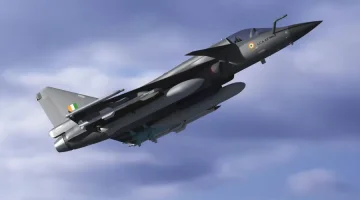- Views: 3K
- Replies: 27

India's ambitious Tejas MkII fighter jet program is making significant strides thanks to a groundbreaking collaboration between the Aeronautical Development Agency (ADA) and the National Aerospace Laboratories (NAL).
Their focus on advanced composite materials and innovative manufacturing techniques promises a next-generation fighter jet that's lighter, stronger, and more cost-effective than its predecessors.
The Co-Curing Advantage
At the heart of this technological leap is the co-curing process. Unlike traditional composite manufacturing, co-curing bonds multiple composite layers simultaneously. This has far-reaching benefits:- Weight Reduction: Fewer individual parts and mechanical joints contribute to a significantly lighter aircraft.
- Enhanced Strength: Co-cured structures boast superior structural integrity due to the seamless integration of components.
- Cost-Efficiency: Fewer parts and simplified assembly procedures translate into reduced manufacturing costs.
India's Composite Innovation
ADA and NAL have diligently developed high-strength, intermediate modulus carbon composites tailored for the Tejas MkII program.This breakthrough culminated in the successful creation of a Flaperon structural assembly, formally handed over by NAL to ADA on October 5, 2023 – a major milestone in the project's development.
Transforming the Tejas MkII
The adoption of co-curing and these indigenously developed composites will be far-reaching within the Tejas MkII's design. Target components for this upgrade include:- Fin and Rudder: Critical for maneuverability
- Wing Spars: Providing structural backbone to the wings
- Wing-Fuselage Fairings: Smoothing airflow for improved aerodynamics
- Various Fairing Blocks
- Centre Fuselage Components: Core of the aircraft structure
- Under-carriage doors: Protecting landing gear
The Future of India's Aerospace Industry
The innovations within the Tejas MkII program have broad implications. A lighter, stronger, and more cost-effective fighter aircraft directly enhances India's defence capabilities.Additionally, the expertise gained in advanced composites and co-curing could pave the way for technological advancements across India's aerospace industry.

